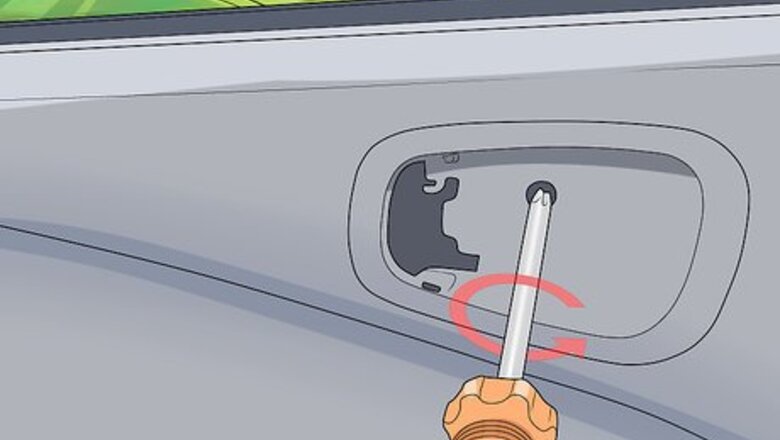
views
X
Expert Source
Duston MaynesAutomotive Repair Specialist
Expert Interview. 11 June 2021.
Though never fun, off track windows are a common automotive problem and can be easily fixed at home.
Removing the Car Door Panel
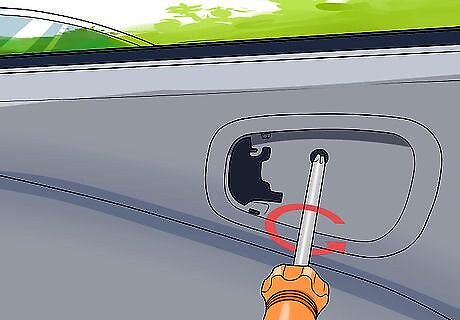
Remove screws and bolts along the interior of the car door. Before fixing the window, you’ll need to get access to the inside of the car door. For smaller problems like an off track window, you can do this by removing the interior car door panel, the plastic cover concealing the car’s window mechanisms. These are typically held in place by simple screws and bolts, meaning you can remove them using a screwdriver and wrench. If the fasteners are particularly tight, use a power tool instead of a manual one. For doors with standard panel fasteners, look for screws along the top, base, and side of the panel. For doors where the fasteners are hidden or non-standard, check your owner’s manual for diagrams and removal instructions.
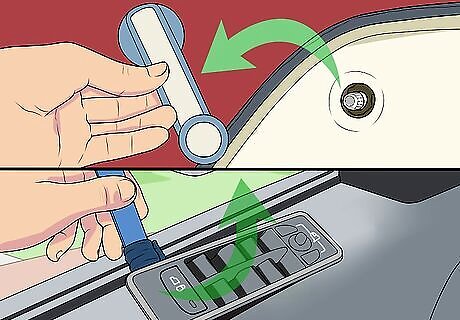
Remove the crank handle, control switch, and other accessories if necessary. Depending on the make and model of your car, you may also need to remove a crank handle, window control switch, or any number of accessories including cupholders, arm rests, luggage bins, and door handles. Most of these can be taken off with the same tools as the door itself, though some may require a specific tool or non-standard method of removal. Check your user’s manual for details on car specific accessories.
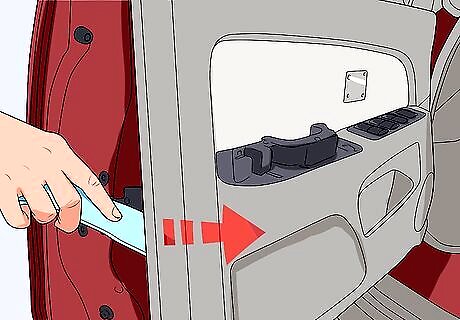
Pop the door panel off using a thin, sturdy tool. With all the trims and fastenings removed, place a small, strong tool under the edges of the door. Press down on the tool gently to pop the door panel out. You may need to do this in multiple spots around the panel to fully remove it. Though any thin tool can be used, ranging from small crowbars to thin pieces of metal, specialty panel removal tools will make the job easier.
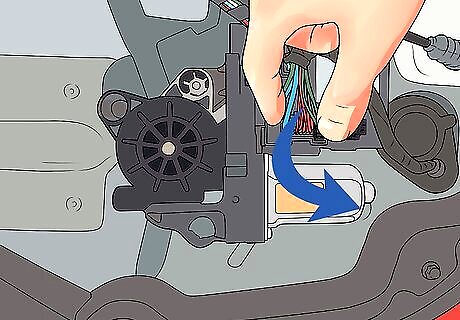
Remove coverings and unplug any wires connected to the door panel. If your car has any, pull back insulation or vapor barriers covering the inside of the door. Then, unplug any wiring keeping the panel fixed to the car. When you’re finished, remove the door panel and put it to the side.
Inspecting the Window Parts
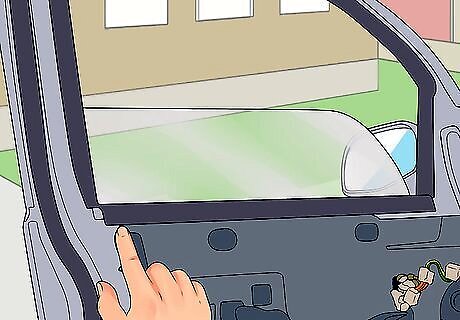
Examine the window track for wear. In some cases, an off track window may be caused by a broken or worn out track. If areas in the track are rusted, apply a few drops of white lithium lubricant to them. If areas in the track are bent, try pressing them into shape using the back of a hammer, wrench, or other firm tool. If the track is rusted or bent to the point of being unusable, you will need to replace the window regulator and, most likely, the window motor. Depending on your car’s make and model, replacement regulators typically cost between $190 and $270, not including a motor.
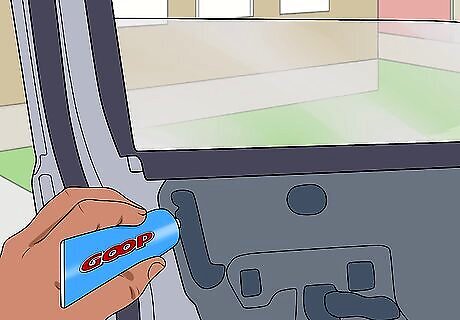
Add adhesive if your window track is dry or rough. If your window track uses glue to hold the glass in place, touch it to make sure it is still sticky. If the window track is dry, rough, or cracked, squeeze a layer of Automotive Goop or similar automotive adhesive into it.
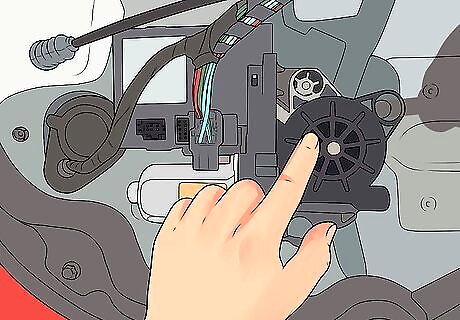
Inspect the electric window motor with a voltmeter. Over time, a bad window motor can cause the glass pane to stop moving, making it appear off track or causing it to fall out of alignment. Check the motor for any clear signs of damage, like dents or holes. If the device seems good, connect voltmeter wires to the motor’s connector terminals. If the voltmeter reads between +12 and -12 volts, the window motor is in good working condition. If the motor seems fine but doesn’t operate correctly, replace the associated fuse in the fuse box. If it still doesn’t work, check the window control switch by connecting an ohmmeter to it and looking for little to no resistance when the switch is pressed. Depending on your car’s make and model, expect replacement motors to cost between $120 and $240, not including a regulator.

Check for bad wire connections. In some cases, a stuck or off-track window may have been caused by a loose or faulty wire. Examine each wire inside the door for kinks, tears, and other forms of damage. If they look good, make sure they’re fully connected to the window motor. If the wires are damaged or broken, you will need to replace them or, in some cases, the whole motor. Though not always available, model-specific replacement wires generally run between $15 and $50 dollars.
Realigning the Glass

Drop the window glass to the bottom of the window channel. Since you will be realigning the glass, move it to the bottom of the frame that lines the inside of the car door, better known as the window channel. Using one hand, firmly slide the glass down as far as you can. If necessary, guide the bottom edge with your other hand. If the window is stuck, run a thin utility knife between the window and door to remove any blockage, then continue sliding it down. Keep the blade parallel to the window to avoid scratching it. If the window will not move down, pull the panel out through the top opening and reinsert it.
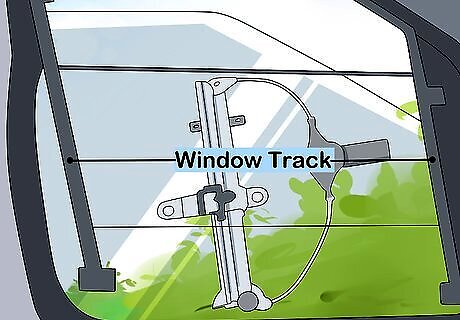
Move the glass onto the window track. Move your window glass until it is lined up on the window track again. Look for areas where the track is pinched, pressed down, or blocked and adjust the window accordingly. When you’re finished, your window should sit entirely within the track. Window tracks are not uniform, so consult your owner’s manual for model specific instructions. In some cars, you may need to remove the bolts on the window track, slide the window in, and rebolt the track.
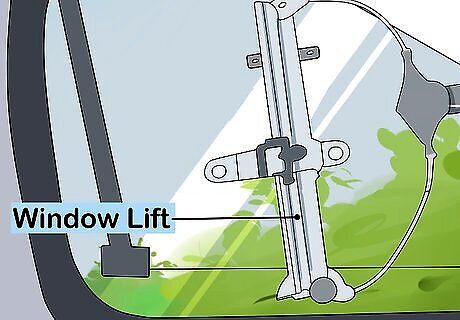
Connect your glass to the window lift if necessary. Realigning your glass to fit the track may throw other parts of the window off, in particular the motor and other elements of the window regulator mechanism. Check to make sure that your window is connected to every part of the lift it needs to be, consulting your owner’s manual for model specific information. If anything is not properly connected, gently adjust your glass or the lift itself to fix the problem.
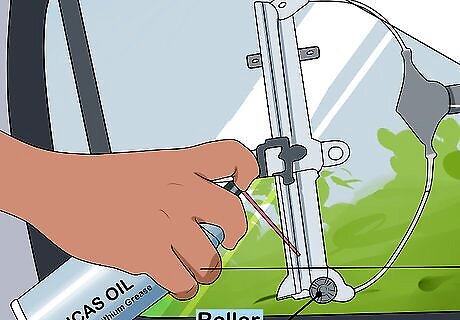
Cover your rollers and tracks with lubricant. Over time, your rollers and tracks will dry out, making it harder for them to raise and lower the window. To fix this, clear the rollers and tracks of any dirt or dust using a brush or can of compressed air, then rub on a coat of Lucas Oil white lithium grease or similar white lithium lubricant. Avoid generic brand lubricant like WD-40 unless you’re using a specialty variant.
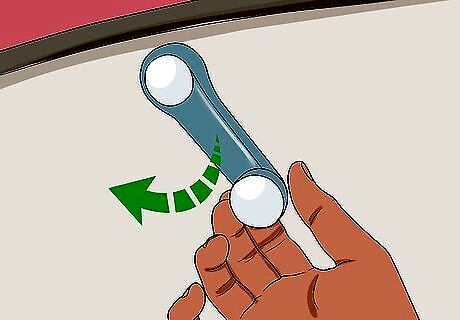
Test to make sure the window works. If possible, reattach just the crank handle or control switch and use them to test the repair. For some cars, you may need to reattach the entire door panel before testing.

Reattach the door panel. When you’re finished checking and realigning your window, replace the door panel and everything you removed. Start by plugging in any wires you disconnected and replacing any protective covers. Then, slip your panel back in place followed by any accessories you removed. Finally, secure everything with the screws and bolts you took out.



















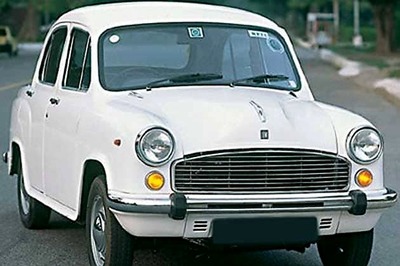
Comments
0 comment